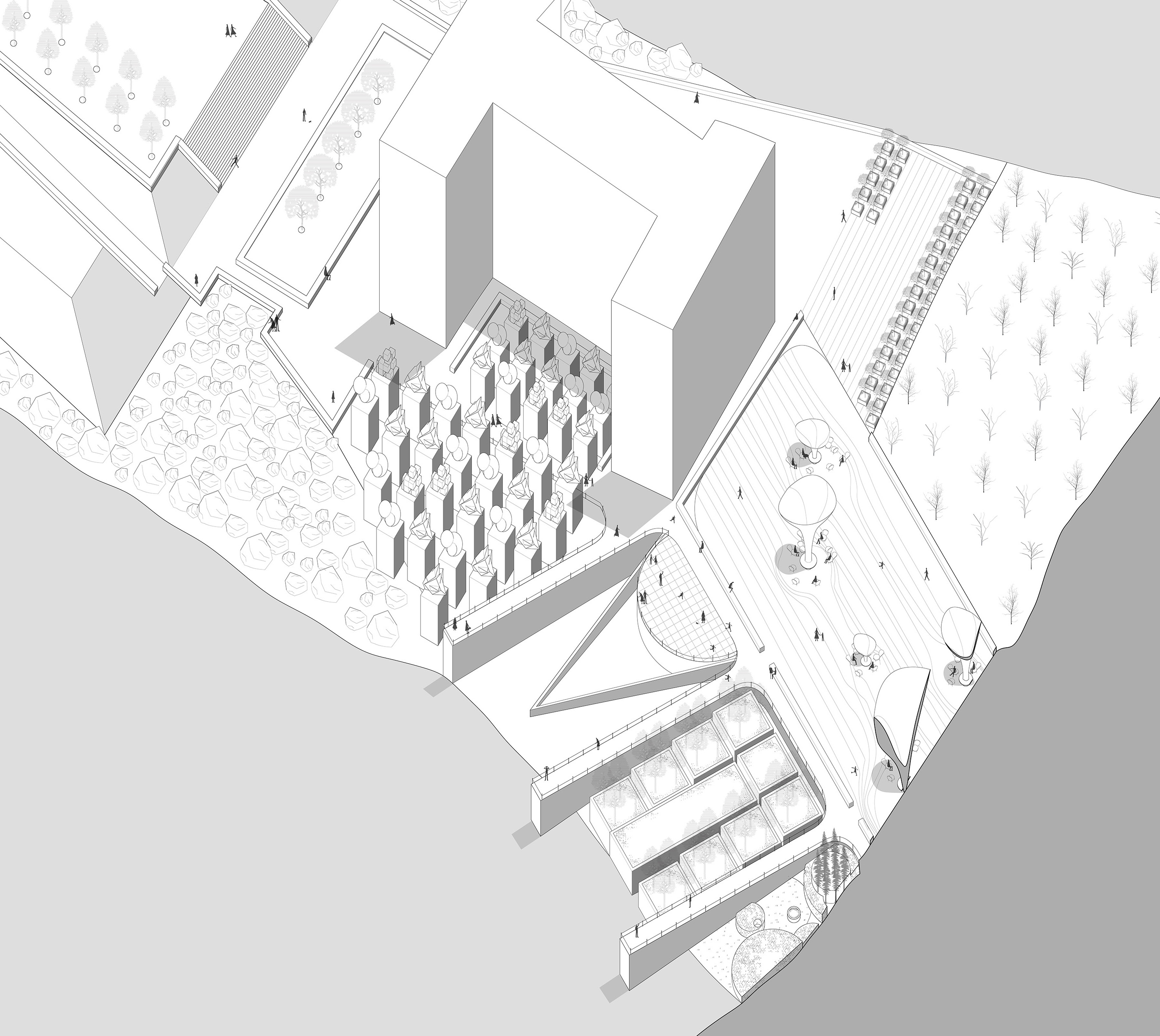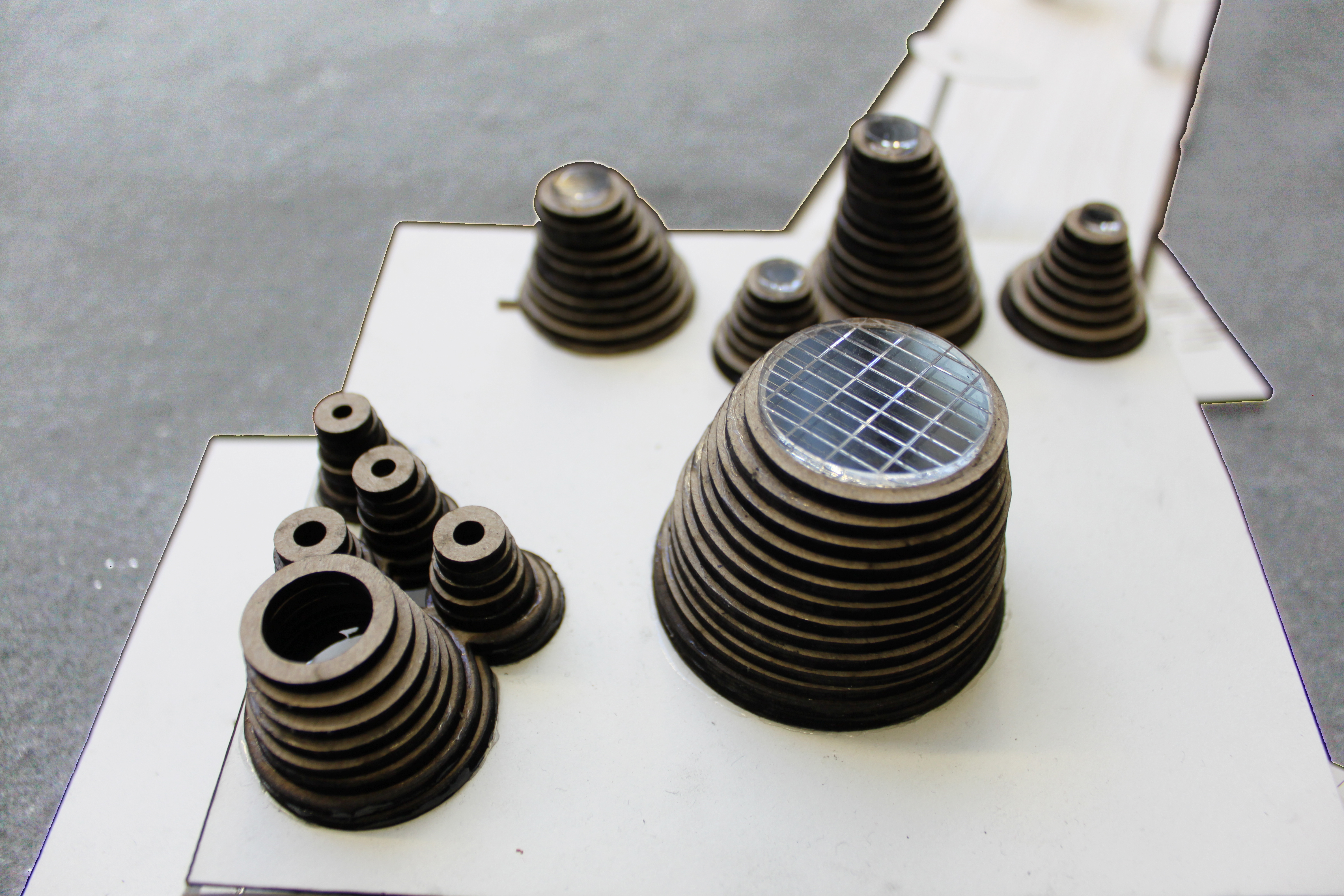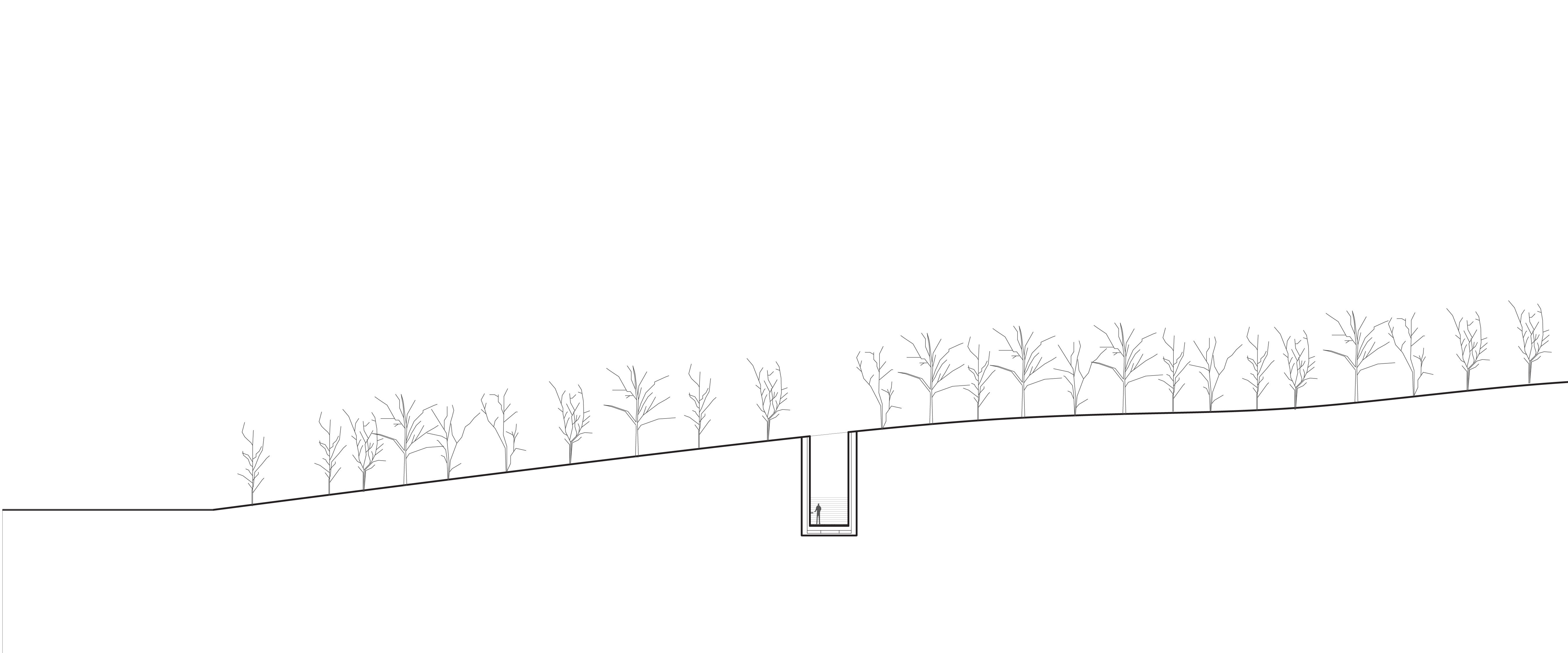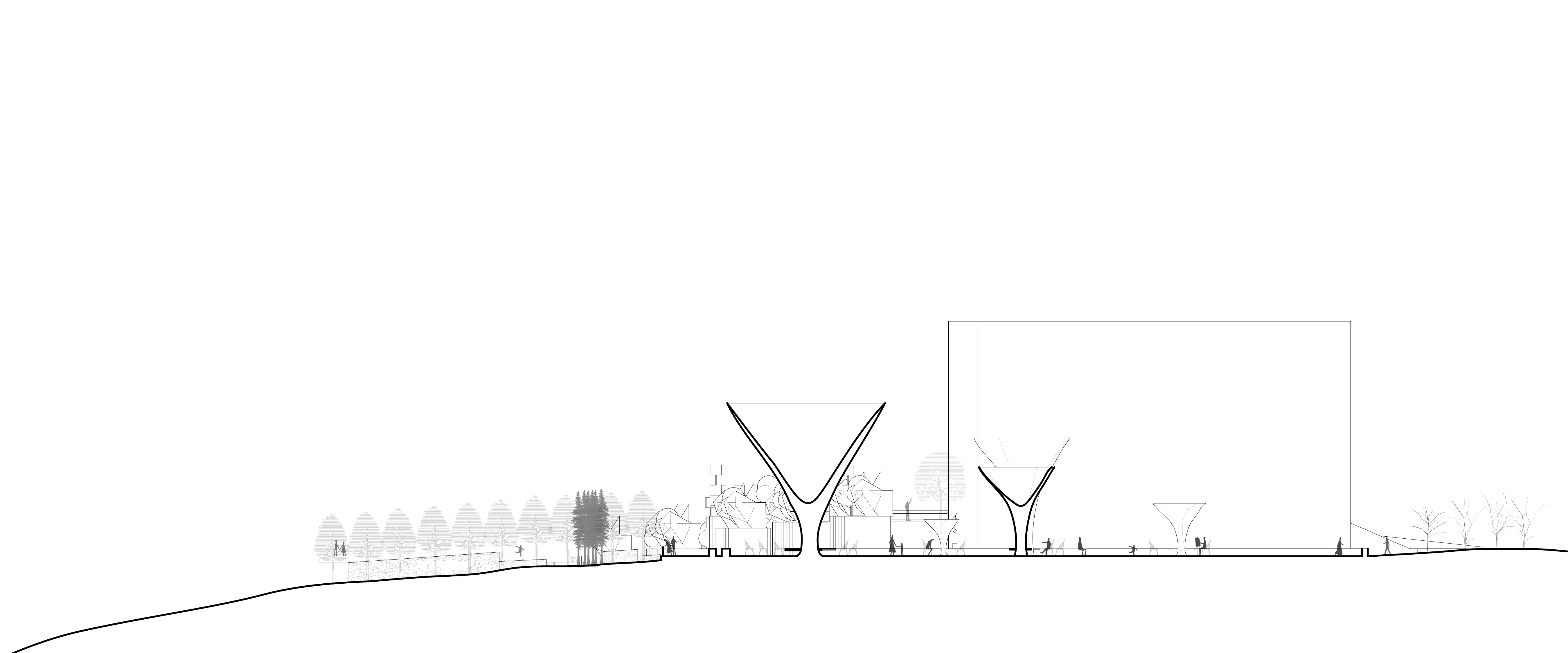Field of Figures
05/ 2015
Situated between the Manhattan island and the land mass of Queens, the Roosevelt Island exhibits a distinct landscape. It is a continuous surface, where the vertical developments have yet overtaken its horizontal order. If the existing developments and geographic features can be abstracted as ‘figures’, then the island itself will be a ‘field’. Therefore, the next step is to question that, what is the boundary of the field and how does it connect to the surrounding fields. In fact, there is an ambiguity between Roosevelt Island’s role as an extended field of the city, or as an independent figure isolated by the water. This project aims to find out the role of Roosevelt Island in relation to the rest of New York City. Moreover, by inserting a harbor and a public park to the east side of the island, whether the kinetics of the public will redefine the existing figural conditions within this ‘field’.

A Hybrid of Fields
Walking along the Roosevelt Island, the cityscapes on either side present contrasting images. The ‘street corridor’ of Manhattan suggests strongly a rigid urban grid which formulates the rigorous vertical developments. On the other side of the Queens, relatively plain developments transit between the water front and the skyscrapers in near distance. As a medium that integrates the two fields, whether the harbor park can invite the logics of the two into the island. Thus, create localized moments that corresponds with perceived orders from both sides of the island.
Figural Configurations
If we think of the figure not as a demarcated object read against a stable field…than it might be possible to imagine figure and field as more closely allied.’
----Stan Allen, ‘Field Conditions’
In the case of Roosevelt Island, the hills, hospital, the FDR Memorial are all existing figures, whilst the harbor, the elements of the park are new figures that are introduced to the ‘field’. On their own, they are perceived as independent objects with very different purposes. However, they all contribute to the wholeness of the island as a ‘field’.







Adopting Two Orders
In the development of new figures, two perceived orders from both sides are applied. The configurations of new figures follow the two orders and thus create ‘intersecting’ spaces between the existing and new figures, or between two types of new figures.






Dynamics and Stability
The edge condition defines figures and offer opportunities to utilize them for diverse activities. These are fixed characters of figures. Public, the ones that access to the harbor park and interact with the figures are the sources of dynamics and unpredictable on the ‘field’. The development of the harbor does not tend to be a permanent fixed ground. Instead, everything that defines and constitutes the figures (structures, furniture, plants, boundaries), all suggest a sense of temporality. It is a four-dimensional architecture. One that opens up possibilities for ‘changes, accidents and improvisations.’